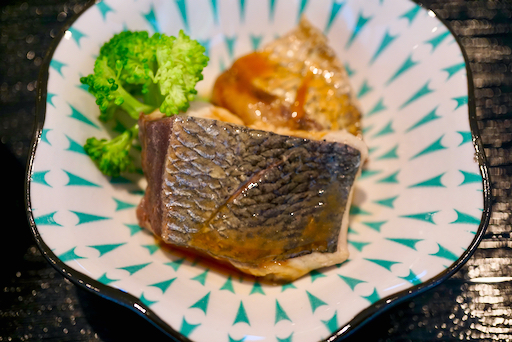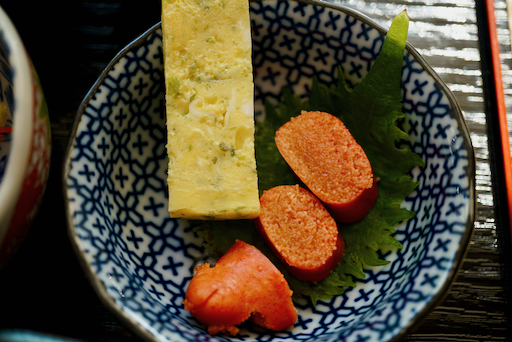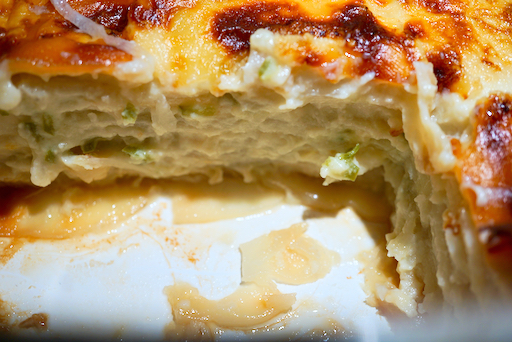We are getting fresh whole fish from Hmart which has a wider selection at lower prices than other grocery stores in the area. We particularly like mackerel with bluefish as a very good mackerel substitute. Bluefish like mackerel is not considered a particularly prized fish because of its very strong flavor. There are various ways to cook it that turn its flavor into an asset which is why we like it. For that reason, bluefish or mackerel are often smoked in the US. I often simmer either fish
in miso and ginger which reduces the fishiness. This time, we got a fairly large bluefish. Since this was a fairly big fish, I ended up with a good amount of fish meat scraped off the bone and tail. I was thinking about making “
tsumire” ツミレfish balls cooked in broth but I came up with this dish called “Sanga” さんが which is a type of fisherman’s dish famous in Chiba prefecture 千葉県. This is usually made from types of fish called “Hikari-mono” 光り物 including mackerel and sardine which have shiny blue skin and tend to get spoiled quickly and can have strong or “fishy” flavors especially when not fresh. Since bluefish to me is in the same ilk, I decided that this dish should work. This dish is essentially a cooked version of “
namerou” なめろう. The main flavorings are miso and ginger. Here, I put perilla leaves on one side of the fish paddies and included a side of sugar snaps in salt broth スナップ豌豆の塩びたし.
This is the cross section. Some of the fish meat were not completely mashed. The yellow and white bits are chopped ginger and scallion.
Ingredients (made 6 small patties).
Blue fish meat scraped off the bone, tail and other parts, hand chopped using a heavy Chef’s knife, about 150grams (a guess)
Red miso 1 tbs
Ginger cut finely, 1 tsp plus ginger juice from grated ginger (about 1/2 tsp)
Scallion, 4 stalks, finely chopped
Potato starch (katakuri-ko) 2 tsp
Dark sesame oil 1/2 tsp
Perilla leaves (4-6 depending on the size)
Directions:
Mix all ingredients well except for the perilla leaves.
Divide the mixture into 6 equal portions.
Lightly oil hands and make the portions into flat discs and place the perilla leaves on one side (#1) in the third picture).
On a medium low flame with a small amount of neutral oil, first cook the side without perilla leaves until nicely browned (#2).
Flip it over and cook the other side for another 1 minute or so or until done (#3 and #4).
This is a good way to use scrap fish meat from the bluefish. The double doses of ginger juice and finely chopped ginger add ginger flavor but not overwhelmingly so. The miso flavor and sesame oil are a good combination. I am not sure if I can taste the perilla leaves. It warmed up nicely by microwaving.























